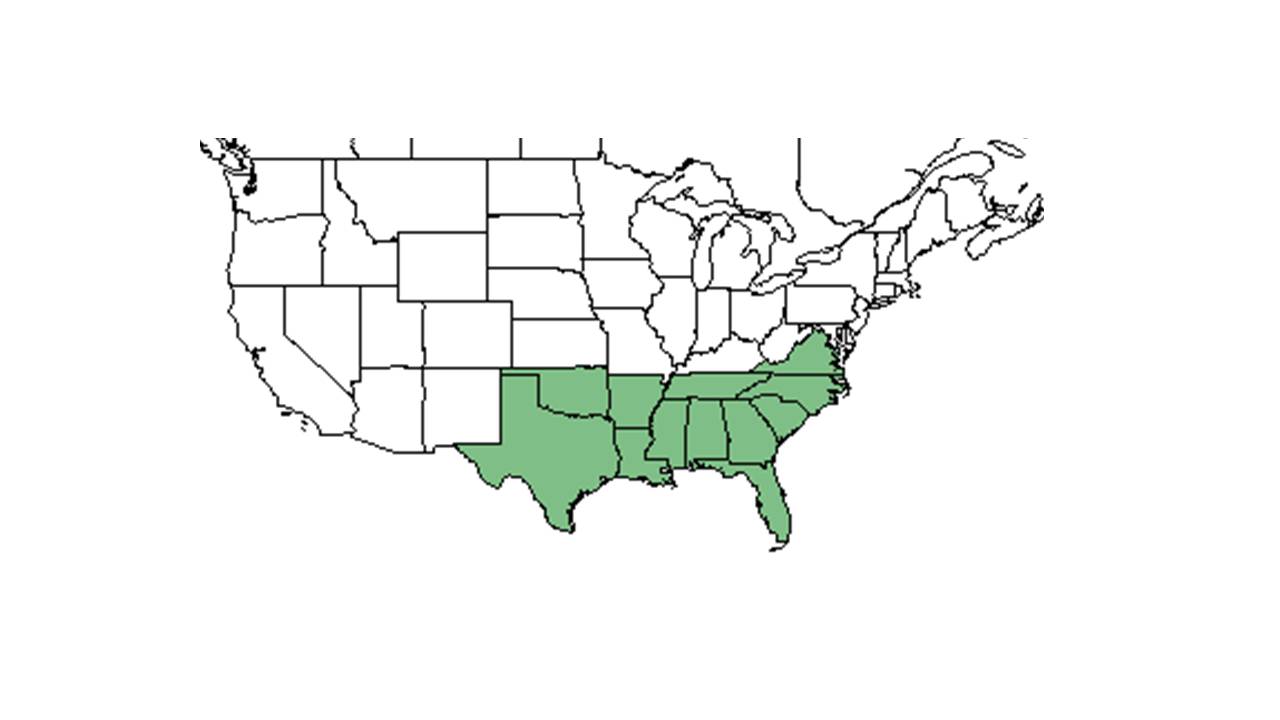Difference between revisions of "Phanopyrum gymnocarpon"
Emmazeitler (talk | contribs) |
|||
| (7 intermediate revisions by 5 users not shown) | |||
| Line 18: | Line 18: | ||
}} | }} | ||
| − | Common names: | + | Common names: savannah-panicgrass, savanna phanopyrum, swamp phanopyrum<ref name=weakley>Weakley, A.S. 2020. Flora of the Southeastern United States. Edition of 20 October 2020. University of North Carolina at Chapel Hill, Chapel Hill, North Carolina.</ref> |
==Taxonomic notes== | ==Taxonomic notes== | ||
| − | Synonyms: ''Panicum gymnocarpon'' Elliott | + | Synonyms: ''Panicum gymnocarpon'' Elliott<ref name=weakley/> |
| + | |||
| + | Varieties: none<ref name=weakley/> | ||
| − | |||
==Description== | ==Description== | ||
<!-- Basic life history facts such as annual/perrenial, monoecious/dioecious, root morphology, seed type, etc. --> | <!-- Basic life history facts such as annual/perrenial, monoecious/dioecious, root morphology, seed type, etc. --> | ||
| Line 29: | Line 30: | ||
==Distribution== | ==Distribution== | ||
| − | ''P. gymnocarpon'' ranges from southeastern Virginia, south to Florida, then west to Texas and Arkansas.<ref name= | + | ''P. gymnocarpon'' ranges from southeastern Virginia, south to Florida, then west to Texas and Arkansas.<ref name=weakley/> |
==Ecology== | ==Ecology== | ||
===Habitat=== <!--Natural communities, human disturbed habitats, topography, hydrology, soils, light, fire regime requirements for removal of competition, etc.--> | ===Habitat=== <!--Natural communities, human disturbed habitats, topography, hydrology, soils, light, fire regime requirements for removal of competition, etc.--> | ||
''P. gymnocarpon'' occurs in wet or moist soils of floodplain forests and wet woodlands.<ref name="FSU Herbarium">Florida State University Robert K. Godfrey Herbarium database. URL: [http://herbarium.bio.fsu.edu http://herbarium.bio.fsu.edu]. Last accessed: June 2014. Collectors: Robert K. Godfrey and Lisa Keppner. States and Counties: Florida: Leon, Liberty, and Washington.</ref> | ''P. gymnocarpon'' occurs in wet or moist soils of floodplain forests and wet woodlands.<ref name="FSU Herbarium">Florida State University Robert K. Godfrey Herbarium database. URL: [http://herbarium.bio.fsu.edu http://herbarium.bio.fsu.edu]. Last accessed: June 2014. Collectors: Robert K. Godfrey and Lisa Keppner. States and Counties: Florida: Leon, Liberty, and Washington.</ref> | ||
| − | |||
| − | |||
| + | ===Phenology=== <!--Timing off flowering, fruiting, seed dispersal, and environmental triggers. Cite PanFlora website if appropriate: http://www.gilnelson.com/PanFlora/ --> | ||
| + | This species flowers from August through October.<ref name=weakley/> | ||
<!--===Seed dispersal===--> | <!--===Seed dispersal===--> | ||
<!--===Seed bank and germination===--> | <!--===Seed bank and germination===--> | ||
<!--===Fire ecology===--> <!--Fire tolerance, fire dependence, adaptive fire responses--> | <!--===Fire ecology===--> <!--Fire tolerance, fire dependence, adaptive fire responses--> | ||
<!--===Pollination===--> | <!--===Pollination===--> | ||
| − | <!--=== | + | <!--===Herbivory and toxicology===--> <!--Common herbivores, granivory, insect hosting, poisonous chemicals, allelopathy, etc--> |
<!--===Diseases and parasites===--> | <!--===Diseases and parasites===--> | ||
| − | ==Conservation and | + | ==Conservation, cultivation, and restoration== |
| − | == | + | ==Cultural use== |
==Photo Gallery== | ==Photo Gallery== | ||
<gallery widths=180px> | <gallery widths=180px> | ||
Latest revision as of 14:34, 19 June 2023
| Phanopyrum gymnocarpon | |
|---|---|

| |
| Photo by Keith Bradley, Atlas of Florida Vascular Plants | |
| Scientific classification | |
| Kingdom: | Plantae |
| Division: | Magnoliophyta - Flowering plants |
| Class: | Liliopsida – Monocotyledons |
| Order: | Cyperales |
| Family: | Poaceae ⁄ Gramineae |
| Genus: | Phanopyrum |
| Species: | P. gymnocarpon |
| Binomial name | |
| Phanopyrum gymnocarpon (Elliott) Nash | |

| |
| Natural range of Phanopyrum gymnocarpon from USDA NRCS Plants Database. | |
Common names: savannah-panicgrass, savanna phanopyrum, swamp phanopyrum[1]
Contents
Taxonomic notes
Synonyms: Panicum gymnocarpon Elliott[1]
Varieties: none[1]
Description
Phanopyrum gymnocarpon is a perennial graminoid.
Distribution
P. gymnocarpon ranges from southeastern Virginia, south to Florida, then west to Texas and Arkansas.[1]
Ecology
Habitat
P. gymnocarpon occurs in wet or moist soils of floodplain forests and wet woodlands.[2]
Phenology
This species flowers from August through October.[1]
Conservation, cultivation, and restoration
Cultural use
Photo Gallery
References and notes
- ↑ 1.0 1.1 1.2 1.3 1.4 Weakley, A.S. 2020. Flora of the Southeastern United States. Edition of 20 October 2020. University of North Carolina at Chapel Hill, Chapel Hill, North Carolina.
- ↑ Florida State University Robert K. Godfrey Herbarium database. URL: http://herbarium.bio.fsu.edu. Last accessed: June 2014. Collectors: Robert K. Godfrey and Lisa Keppner. States and Counties: Florida: Leon, Liberty, and Washington.